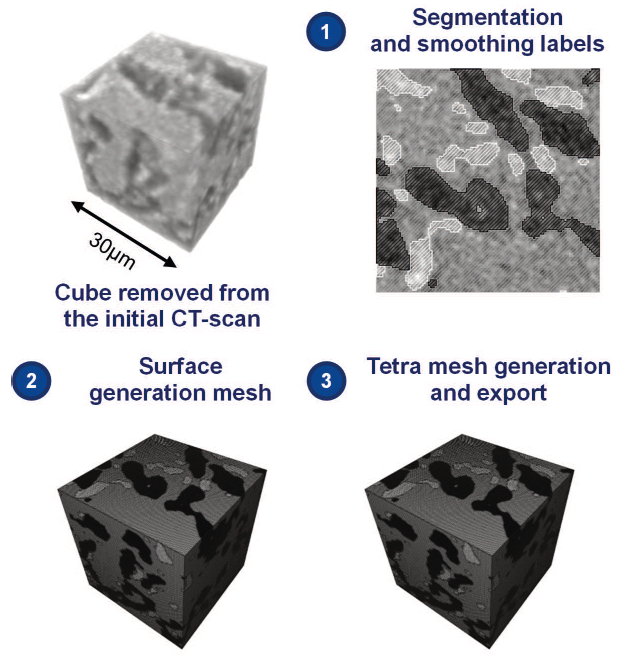Assessment of effective elastic properties and residual stresses in directionally solidified eutectic Al2O3/YAG/ZrO2 ceramics by finite element analysis

Current materials such nickel based superalloys cannot be used anymore and new materials are thus considered. For the hottest parts of jet engines, eutectic ceramics have potentially interesting features. In order to assess the thermo-mechanical properties of this material, numerical multi-scale analyses may be performed. Thus, a 3D finite element model was generated from a CT scan, representative of the microstructure and with a similar volume fraction. Effective elastic properties were calculated by numerical homogenisation. They highlight a quasi-isotropic behaviour of the ternary eutectic ceramics. Thermal residual stresses induced by the manufacturing were also evaluated. Tensile residual stresses in yttria-stabilised zirconia and compressive residual stresses in YAG and alumina were highlighted. This evaluation also shed light on the influence of the phase morphology in the microstructure. Indeed, the computed spatial distribution of the residual stresses showed that they are different from one position to another due to the variation in phase morphology, and also to material properties variability. Therefore, it is important when numerically assessing the thermomechanical properties to take into account the microstructure morphology as well as the variability of material properties.